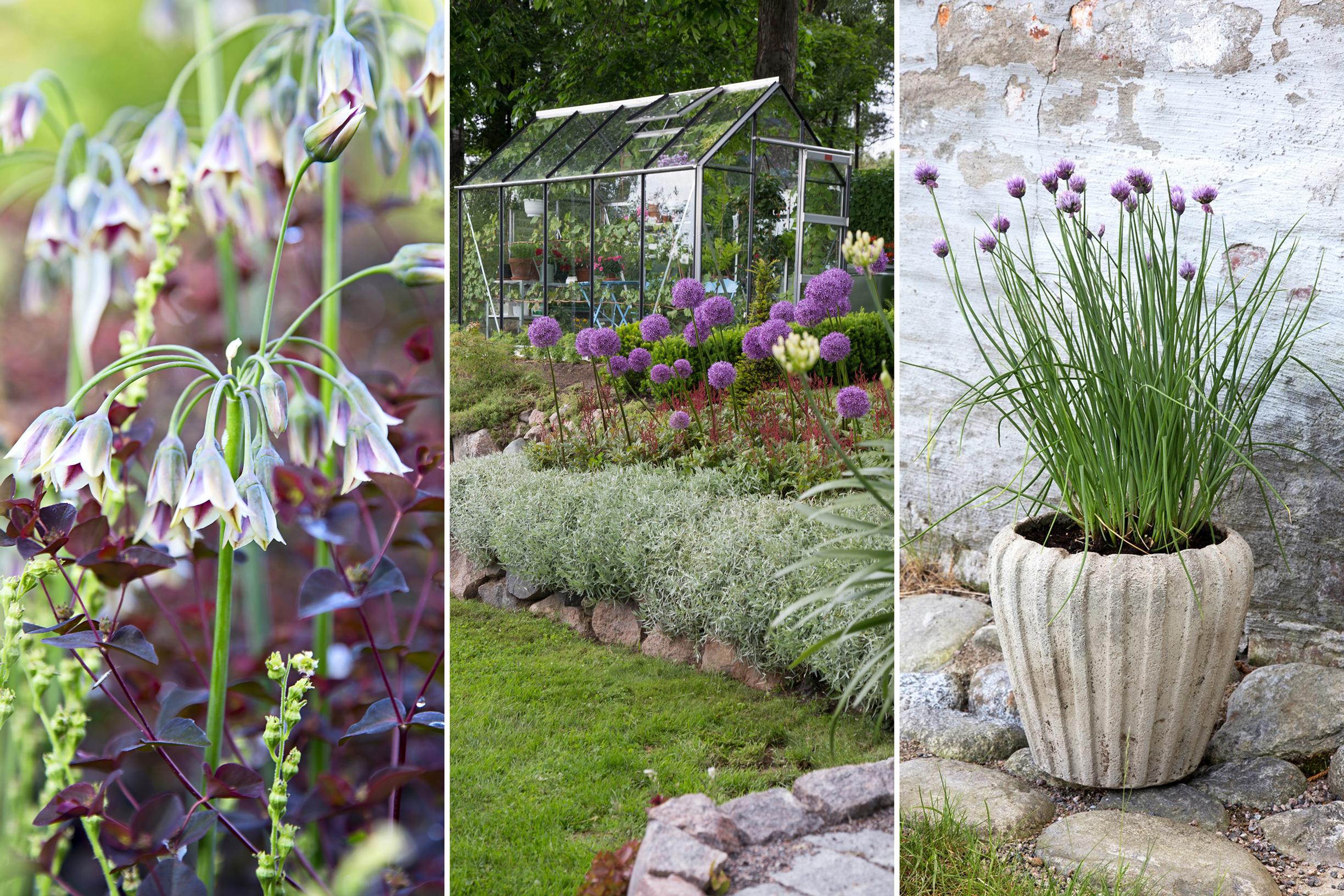
How to hide leaves, handle voles, and pot your alliums: 7 common questions answered
Horticulturist Tuovi Mutanen shares her answers to common questions about growing and caring for alliums.
1. Which allium works best in a small rock garden?
Most alliums thrive in soil that drains well and contains some sand. In your rock garden, pair sedums and saxifrages with the dainty Allium 'Farreri', or pink lily leek—despite its name, it also fares well in somewhat dry conditions. A sturdy, broad-leaved Kara Tau garlic is likewise a good choice for a rock garden.
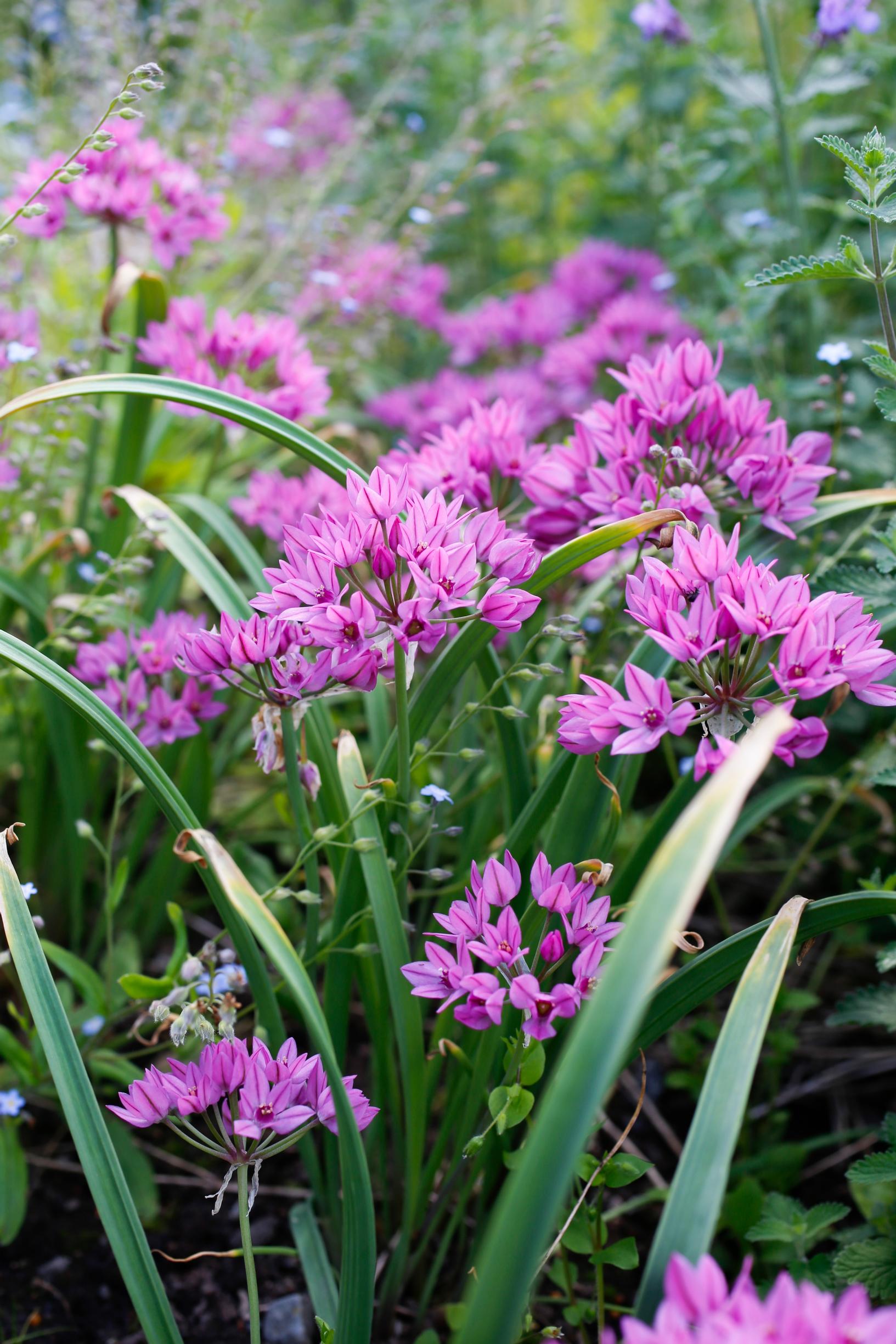
2. I’m looking for variety in my bulb bed. Are all allium flowers spherical?
The inflorescence of Sicilian honey garlic doesn’t form a tight sphere. Instead, individual flowers droop from the top of the stem like a loosely spaced umbrella. Its petals, with yellow-green and reddish hues, bring lively contrast among solid-colored varieties. At about 20 cm (8 in.) tall, the bell-shaped blooms of Lombardy garlic offers a different look, while the flower head of pisarapunalaukka resembles a splashing burst of water. Along with varied flower shapes and colors, picking alliums of different heights can add even more interest.
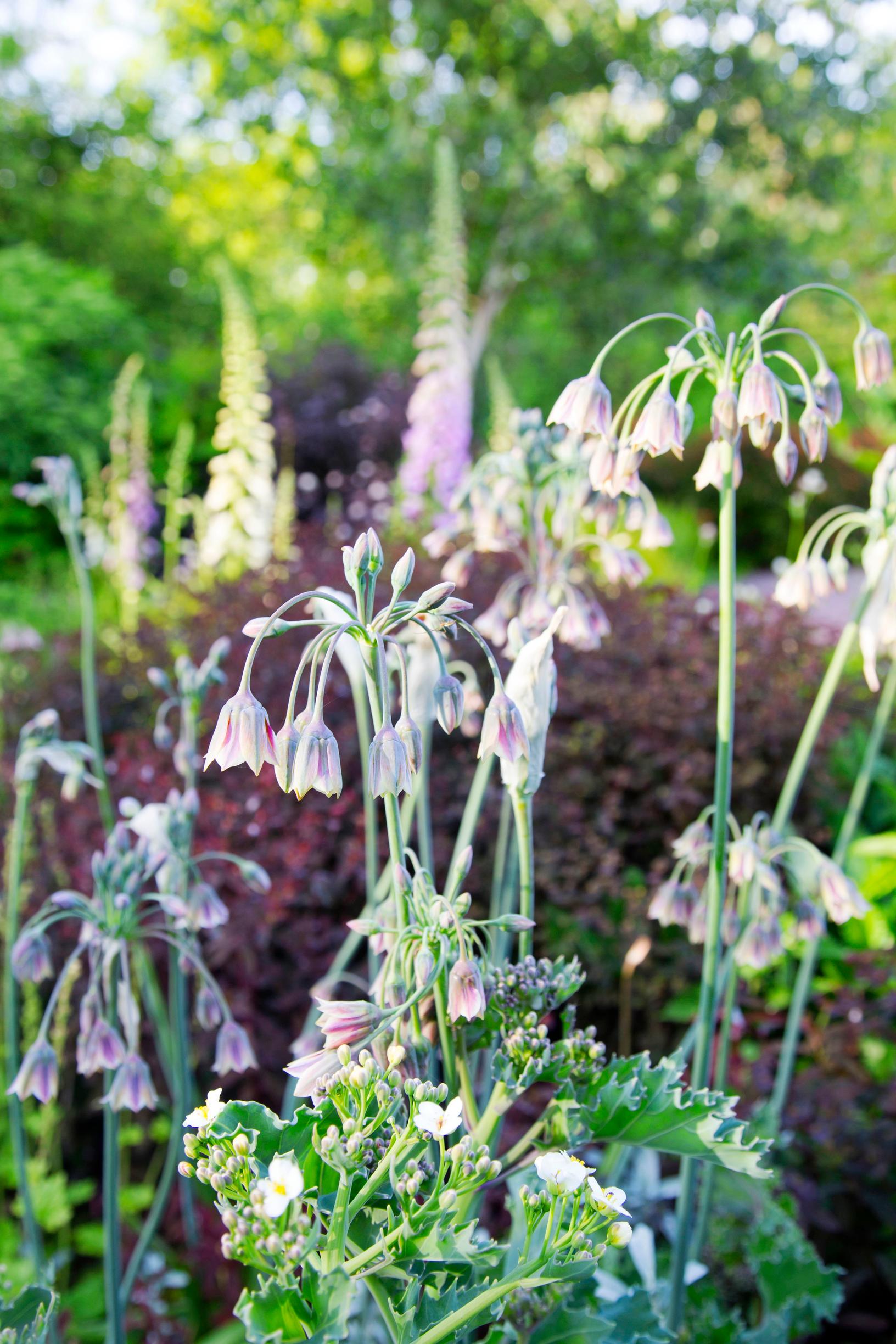
3. Can I plant alliums in pots?
Alliums work well in “plant in fall & enjoy in spring” containers. Opt for short or thick-stemmed varieties that stay upright, and add drainage material at the bottom of the pot. Use a well-draining, sandy potting mix. Plant the bulbs in moist soil, spaced closer than usual, and keep the container in a cool space above freezing through winter. Keep an eye on it in late winter; once new shoots appear, move your alliums into the spring light so they can develop.
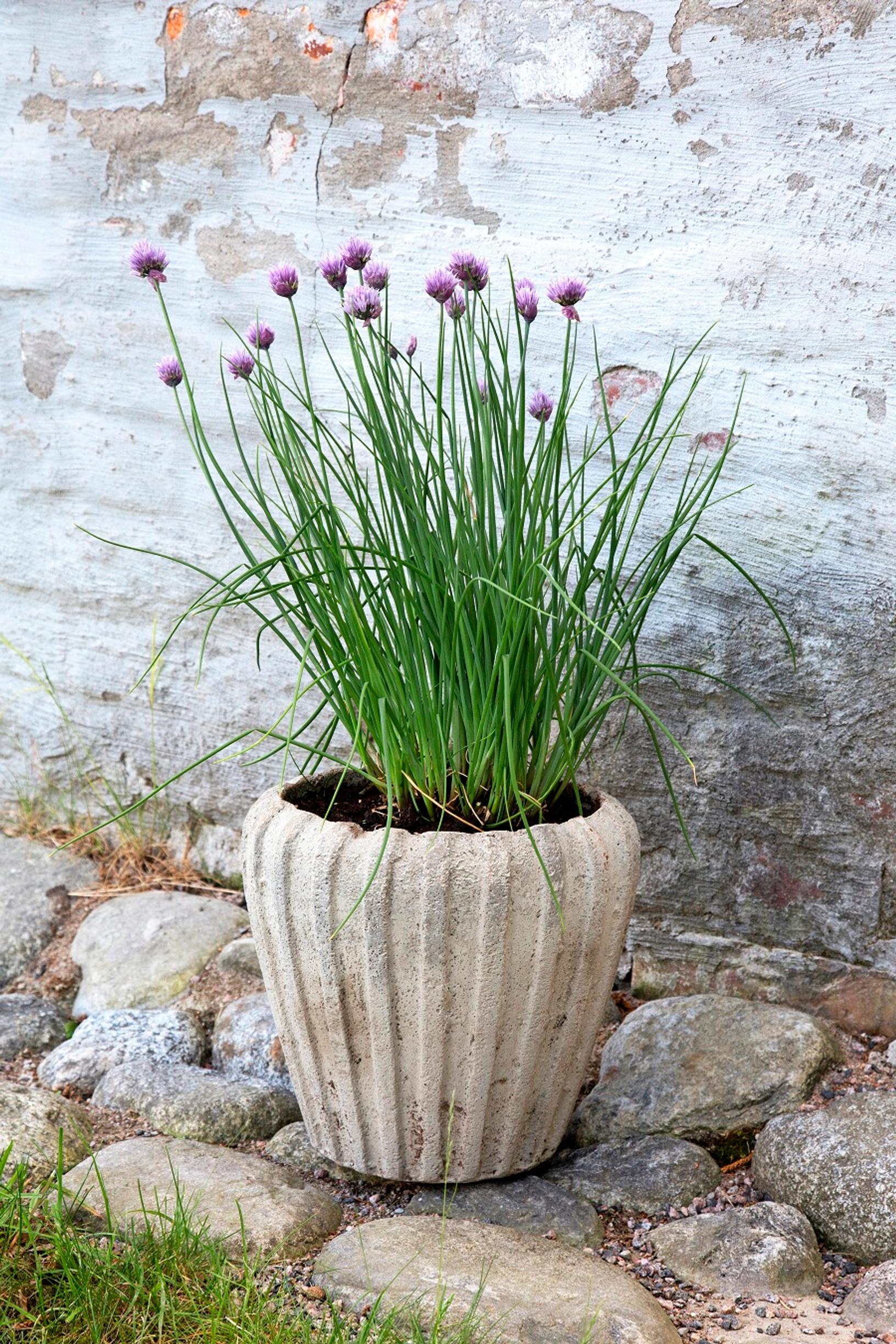
4. My ramsons grew fine in spring, but then they vanished. What happened?
The growth rhythm of ramsons suits a woodland environment. Many herbaceous woodland plants have only a bright window in spring to grow, bloom, and set seed before tree foliage casts shade. After this brief spurt, ramsons foliage withers and disappears, but the bulbs and seeds remain in the soil for the following spring. Also check our article on growing ramsons here [in Finnish].
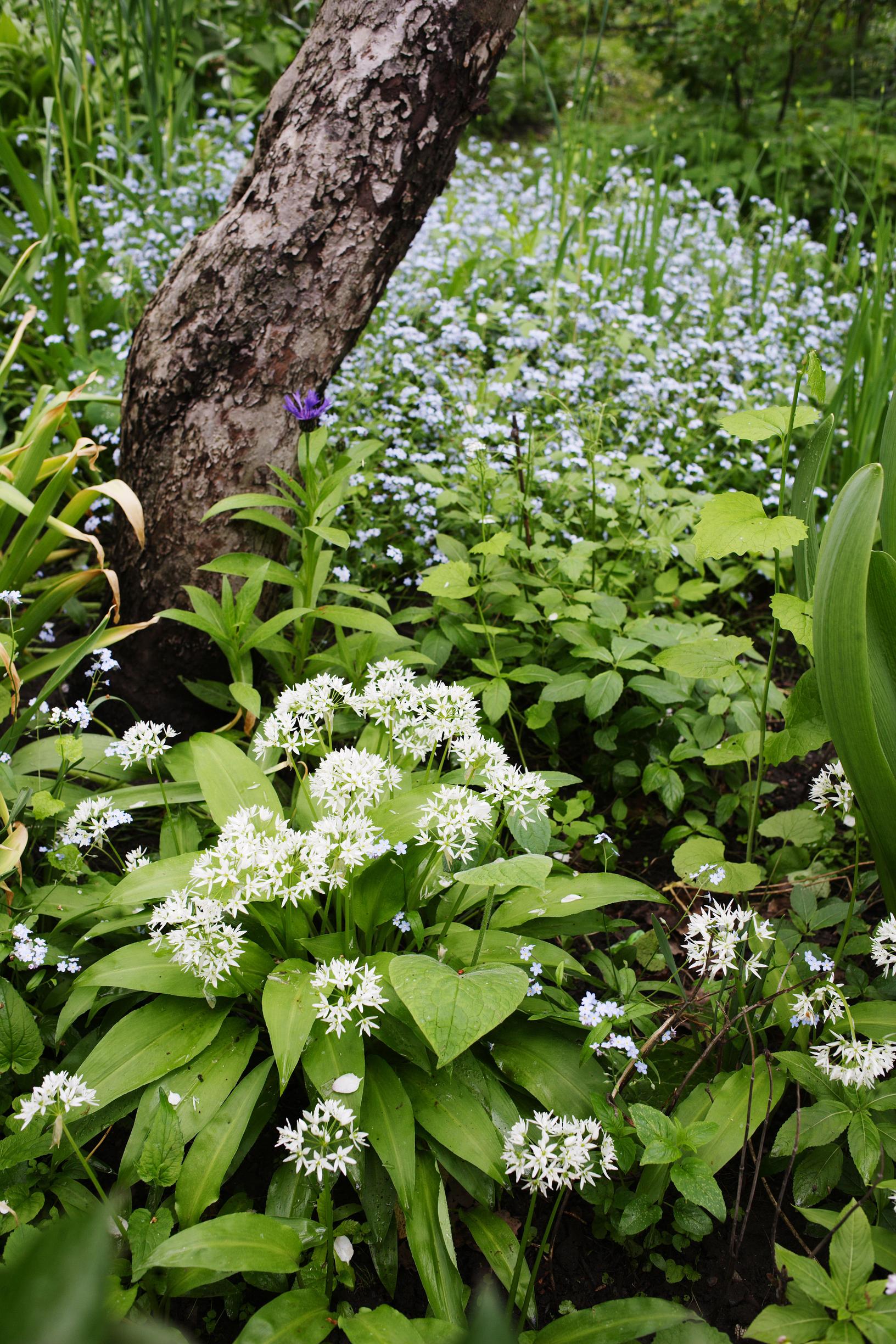
5. How do I hide the withering leaves of alliums?
Alliums that bloom in spring tend to have leaves that fade while flowering, so they look best surrounded by leafy perennials. Taller varieties pair nicely with mid-height geraniums, peonies, or the delicate, charmingly lacy sand sage. Lower-growing alliums hide their withering leaves well among early pasque flowers or in later-blooming clumps of showy stonecrop.
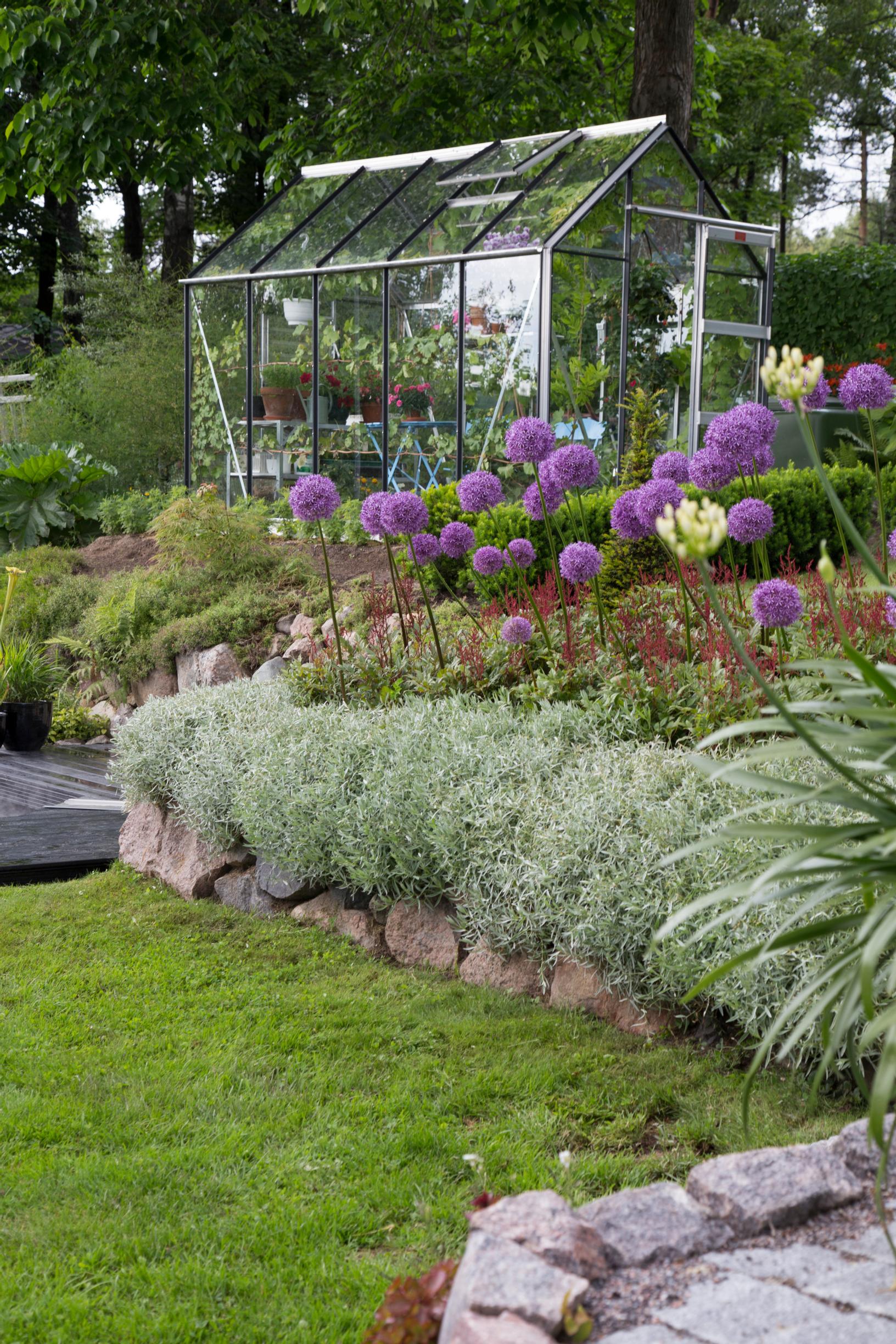
6. Do voles eat allium bulbs?
Voles and mice, whether tunneling underground or roaming on the surface, may eat bulbs from below or above. Water voles particularly like tulip bulbs and crocus corms. Allium bulbs aren’t usually as appealing, thanks to their strong odor, but truly hungry critters may still go after them.
7. Do alliums last in a vase?
Alliums have wonderful shapes and strong staying power as cut flowers, whether on their own or combined with other species. Leave the leaves on the plant, and cut the flower stems with a sharp knife once about half the buds have opened. They’ll last longer if you change the water daily, rinse the stems under running water, and cut new surfaces each time.


